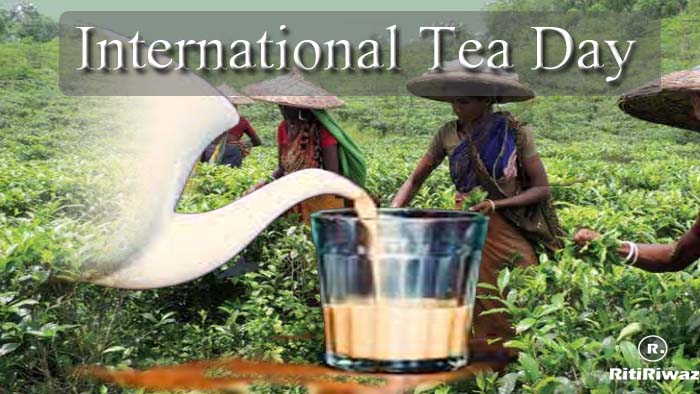International Tea Day – 21st May

Tea (Chai) is basically a super drink that has its own health benefits. Tea can be black, green, white, oolong, and pu-erh, there is also some herbal tea that is used for body healing. Tea contains antioxidants called flavonoids which help to protect our body from disease.
Tea lovers always like to drink tea, but in winter tea has its extra importance as it gives you extra immunity and boost. Tea is a wonderful spice, which has anti-bacterial elements, Cloves, cardamom, and cinnamon can be added to tea to make it more healthy. Ginger is the first home remedy for our digestive problems and cold and cough and adding ginger to tea makes it more wonderful and tasty.
International Tea Day is celebrated on ay 21st May, as May happens to be the quality tea manufacturing season. The United Nations General Assembly had designated May 21st as International Tea Day based on a proposal moved by India at the FAO Intergovernmental Group (IGG) on Tea in October 2015.
In 2004 trade associations international organizations met in Mumbai and decided to celebrate International Tea Day on December 15. It was in 2005 when the first International Tea Day was celebrated in New Delhi. In 2015 Indian government proposed the UN Food and Agriculture Organisation for observing an “International Tea Day” and the proposal was agreed which was supported by countries such as Canada, the United States, European Union, Sri Lanka, China, Japan, Kenya, Malawi.
International Tea Day is presently celebrated in tea-producing countries like China, India, Kenya, Vietnam, Sri Lanka, Malawi, Tanzania, Bangladesh, Uganda, Indonesia, and Malaysia.
The day highlight issues of tea workers
-
Insecurity of tenure
-
Lack of basic healthcare, education, housing, food, and sanitation entitlements.
-
Workers in closed tea gardens want the protection of housing rights.
-
Insufficient wages and debt of Tea workers.
-
Improved sanitation and clean, potable water on tea plantations are priorities.
-
Medical care for tea workers in rural areas is lacking.
-
Violations of women’s rights and gender discrimination.
-
Women constitute more than 50 percent of the workforce on tea plantations and often do not have access to education.
Tea in India
India is the second-largest producer of tea plantations and the biggest consumer of tea. The biggest production of tea in India is at Assam, west Bengal Kerala, and Tamil Nadu. Most of the tea workers in India are descendants of schedule caste and tribal communities, who were brought from various Indian states to the tea estates as bonded or forced labor during India’s colonial period.
Having limited access to education or economic opportunity outside the tea plantations, tea workers are highly dependent on their employers. The livelihood of tea plantation workers is not less than pathetic they have been keeping away from all the basic needs like drinking water, toilet facility, proper sanitation, clean environment, they also have not provided basic health and medical facility.
On this day seminars, programs and discussions are organized by workers’ organizations, trade organizations, and civil society. Various concerns and problems of tea laborers and the world of the tea trade are talked about. Along with creating awareness for the welfare of the tea workers, it increases the awareness of Tea to the world.
The International Tea Day which earlier was celebrated on December 15, has now reportedly shifted to May 21. But no matter when it is celebrated, Tea lovers know no bound to celebrate their favorite drink.
Suggested Read: Drinking Green Tea
